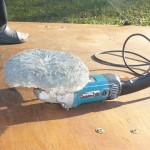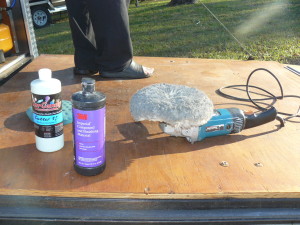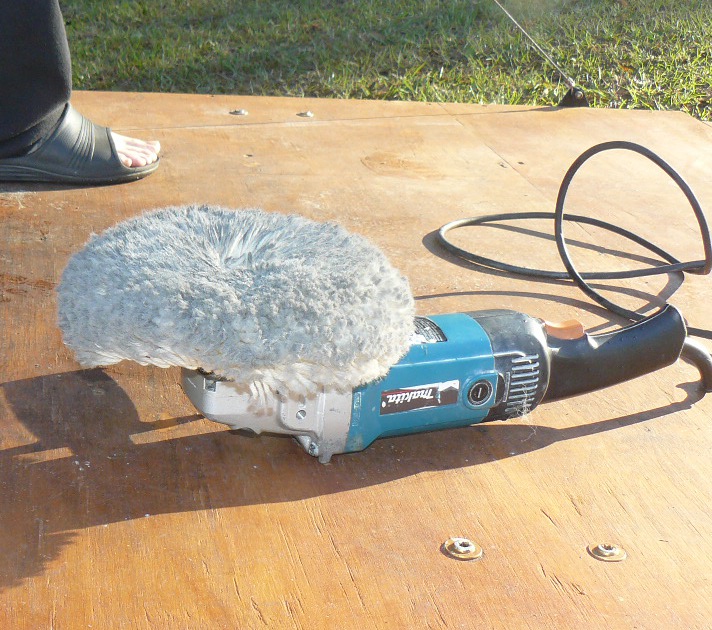
Without high-speed buffing there would be no detailing industry. There would be no car detailers, no boat detailers, and no RV detailers. High-speed buffing is simply an essential part of the detailing process. The results you get from high-speed buffing is far superior than with any other process.
The high-speed buffer is one of the reasons that detailing is a premium service and detailing professionals can get fantastic results and make old paint shine like new again. In a couple of our previous blog posts, we have shown some of the before and after photos. The high-speed buffer is what makes the difference.
The Difference Maker
High-speed buffing is the difference maker in the detailing world. However, it is not a matter of just going out and buying a high-speed buffer for people who want to do it themselves. There are some dangers that come with the powerful equipment. Burns and swirls are common problems that come up when people with little or no experience use a high-speed buffer.
If you intend to go it alone, then we can provide you with a few pointers that can help you avoid some of the common pitfalls.
DIY High-speed Buffing
The high-speed buffer is used in a number of processes on the exterior of the car. You use it when compounding, waxing and polishing. Each application has a a variety of pads that can be used as well as chemicals to apply to the paint. So, you have three parts to each process, whether it is compounding or waxing or polishing: The buffer, the pads, and the chemicals.
First, when it comes to the buffer there are two choices. A rotary buffer or high-speed orbital buffer. The high-speed orbital buffers safer because there is no heat buildup when you use it, but the rotary buffer is what creates the deep glossy shine. The heat buildup in the rotary buffer is what creates the shine because the heat generated softens the paint so that the friction can clear up the defects more quickly. This is what we use at Detail Daddy. And if you want to get the best professional result, you should invest in a rotary buffer.

The heat generating capacity of the rotary buffer is also what causes problems if you are not careful. This is why you should always apply a light pressure when you are using it. Let the rotation of the pad do most of the work rather than pressure on the paint. This way, you will avoid damaging the paint while getting used to using the tool.
Tips
- Don’t apply too much pressure.
- Don’t mix chemicals with the pads.
- Don’t put too much compound on the pad.
- Do keep a large supply of pads around.
- Do clean your pads before they become shiny (too much compound on them).
Buffing Pads
The second part of the high-speed buffing equation is the pad you use on the buffer. There are two general type of pads: wool and foam pads. There is a wide range of available products for the buffing pads. 3M and Meguires both have a huge assortment.
Here is a list of pads 3M carries for boat care.
Meguires has an assortment on their products page you can look up here.
If you search for the Meguires products on Amazon, you can see that they are well regarded and a good choice for detailing your car.
The number of available products for buffing pads can be a little overwhelming. There are mainly three different areas, cutting, polishing and finishing. You should get a pad for each part of the process. The cutting pads cut through moderate surface defects. The polishing pads eliminate minor surface defects and the finishing pads restore the gloss on your paint.
In Conclusion
The high-speed buffer is the workhorse of the detailing business. If you want to go with the full professional kit, get the rotary buffer, and if you want to be on the safe side, pick up an orbital buffer. If you are just getting started, make sure to follow the list of do’s and don’ts.

